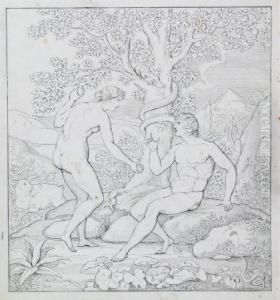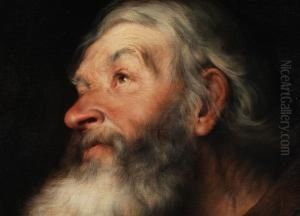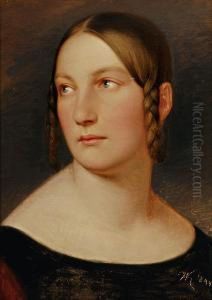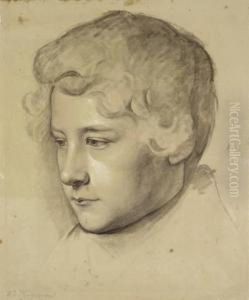Wilhelm Von Kugelgen Paintings
Wilhelm von Kügelgen was a notable German painter, primarily recognized for his contributions to portrait and historical painting during the 19th century. Born on November 20, 1802, in St. Petersburg, Russia, into a family of artists, Kügelgen's early exposure to the arts profoundly influenced his career path. His father, Gerhard von Kügelgen, was a distinguished painter who served as a court painter in Russia and later in Germany, ensuring that Wilhelm grew up in an environment steeped in artistic tradition and excellence.
Kügelgen embarked on his artistic education under the tutelage of his father, which laid the foundation for his classical approach to painting. After his father's tragic murder in 1820, Wilhelm and his twin brother, Karl von Kügelgen, moved to Germany to continue their studies. Wilhelm's journey took him to Dresden, a city that was becoming a hub for artists and intellectuals in Germany, where he further honed his skills and began to establish his reputation.
Throughout the 1820s and 1830s, Wilhelm von Kügelgen traveled extensively across Europe, including stays in Italy and Switzerland, where he was exposed to various artistic styles and techniques. This period was crucial for his artistic development, as he absorbed influences from the Renaissance and the burgeoning Romantic movement. His style began to reflect a blend of classical precision with the emotional depth and expressiveness characteristic of Romanticism.
Kügelgen achieved significant recognition for his portrait paintings, which were highly sought after by the nobility and intellectual elite of his time. His ability to capture the character and essence of his subjects with acute sensitivity and detail won him numerous commissions. In addition to portraits, he also engaged in historical and religious painting, where his work displayed a keen interest in narrative and drama.
Not just a painter, Wilhelm von Kügelgen was also an accomplished writer. His memoirs, which detail his artistic journey and the cultural milieu of his era, provide valuable insights into the life of a 19th-century artist and the artistic circles of the time. Kügelgen's contributions to art were not limited to his own creations; he was also instrumental in fostering a community of artists and promoting the exchange of ideas among his contemporaries.
Wilhelm von Kügelgen passed away on March 25, 1867, in Ballenstedt, Germany. His legacy is preserved in his works, which continue to be celebrated for their embodiment of 19th-century artistic ideals and their vivid portrayal of historical and personal subjects. Kügelgen remains an important figure in German art history, bridging the classical and Romantic traditions through his extensive and varied body of work.



